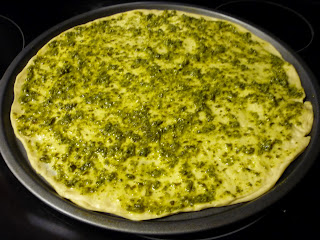I never liked mayo, but I understood it as a necessary evil to hold together chicken or tuna salad. Turns out it isn't. In the past few years, I have made relatively successful chicken salad with sour cream and with plain Greek yogurt. But the most flavorful version is this one, made with herbed margarine from Bev Laumann in A Taste of the Good Life. I've made only minor changes. It is definitely best heated, but it's still pretty tasty cold. And you can use real butter, but it gets a little too rich.
Hot Tuna Salad
Adapted from a recipe by Bev Laumann, A Taste of the Good Life (1998)
Ingredients:
2 T. Smart Balance (or other butter substitute)
1 tsp. dried parsley
1/4 tsp. onion powder
1/4 tsp. salt
1/8 tsp. pepper
6 oz. can light tuna, packed in olive oil
1/3 c. celery, chopped
2 whole wheat English muffins (check for vinegar if you're on a low-acid diet)
2 slices Muenster cheese
Directions:
1. Drain, rinse, and pat dry tuna.
2. Soften Smart Balance by heating for 10 seconds in the microwave. Mix with parsley, onion powder, salt, and pepper.
3. Stir in drained tuna and celery. This mixture keeps well in the fridge if you want to make it in advance or keep leftovers.
4. Split each muffin and top with the tuna mixture. Split each slice of cheese in half, and top each muffin half with a half-slice of cheese.
5. Toast until cheese is hot and bubbly.











